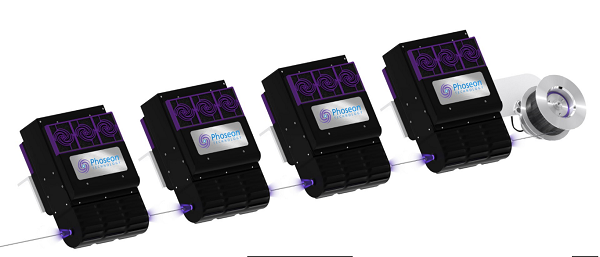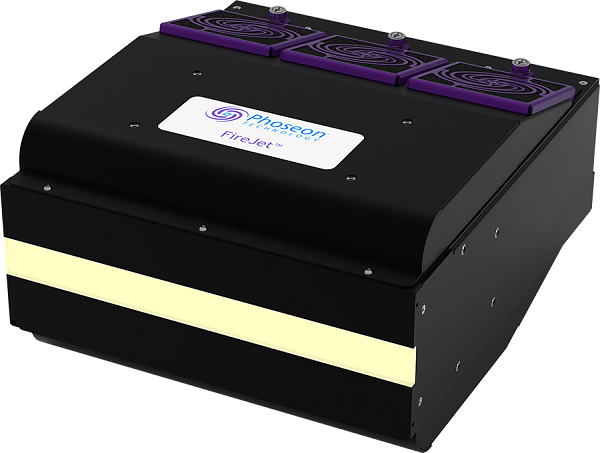High demand for coated filaments across a wide and growing spectrum of applications, ranging from cell phones to fabrics, is causing manufacturers to increasingly turn to Phoseon Technology’s revolutionary UV LED curing because of the advantages it offers compared with traditional UV or arc light curing methods.
There are many types of coated filaments, ranging from copper wire covered with a thin layer of insulation used in everyday appliances, to coated threads used in specialized clothing materials that improve athletic performance, personal comfort and protection from the elements.
Until recently, manufacturers cured the coating on filaments using UV or arc lights. Now an increasing number of manufacturers utilize Phoseon Technology’s UV LED curing for filament coating because it produces faster and more consistent results than traditional curing methods.
“UV LED curing uses a fine-tuned light source that enables better process control, resulting in a superior and more consistent overall product,” said Ed Kiyoi, technical marketing engineer at Phoseon Technology. “That process control leads to higher yields and reduces scrap for manufacturers.”
 |
|
Phoseon UV LED technology is used to cure a filament coating. Coated filaments cover a wide spectrum, ranging from copper wire covered with a thin layer of insulation to coated threads used in specialized clothing materials. (Image: Phoseon Technology) |
The communications industry is fueling increasing demand for coated filaments, with needs ranging from fiber optic cable to copper wire.
“Fiber optic cable is used for most of the world's data networking and telecommunications, including internet, cable television and telephone systems, because it can transmit data over long distances,” said Kiyoi. “Other technologies, such as cell phones, also are driving up demand for coated filaments. Most people aren’t aware how much fine copper wire is used in a single cell phone speaker, and most cellphones contain three or more small speakers.”
Rapid curing and improved process consistency are important benefits, but UV LED curing also can reduce operation costs and energy usage up to 70 percent. In addition, because UV LED curing does not contain mercury, which is used in arc lights, it is safer for the environment and workplace.
Furthermore, UV LED curing enables manufacturers to produce filament coatings that are not possible with conventional methods. For example, because UV LED curing creates less heat than traditional arc or microwave lamps, it allows manufacturers to coat fine thread with specialized chemicals to produce “smart textiles” for applications such as protective clothing.
“There have been tremendous advancements in coating materials in recent years,” said Kiyoi. “We’re working closely with companies that develop coating materials so we can continue to improve the curing process and adapt our technology to keep pace with coatings advancements.
 |
|
Phoseon Technology’s UV LED curing is increasingly being used by manufacturers for filament coating because it produces faster and more consistent results than traditional curing methods. Demand is increasing for coated filaments used in a variety of products from cell phones to fabrics. (Image: Phoseon Technology)
|
“In some cases, UV LED curing allows manufacturers the ability to do coatings they otherwise couldn’t,” he added “In all cases, UV LED technology enables the curing process to be done faster and more efficiently with less waste.”
In addition to “smart textiles”- fabrics used in clothing that can do everything from heat or cool the wearer to biometric clothing that monitors the wearer’s energy usage, heart rate and sweat level - another coating advancement is for medical applications in which the threads of bandages are coated with medications that are released in select doses at specified intervals.
“While there is an investment in the UV LED curing equipment, and the company may have to change its process to adapt to the new curing equipment, many companies see a return on their investment very quickly,” Kiyoi said. “The adoption rate of UV LED curing is accelerating, and the more companies that change over, the more it influences others to make the change.”
In addition to curing filament coatings, Phoseon Technology’s UV LED technology also is used in a wide range of other applications, such as printing on paper, film, plastic and glass, as well as in manufacturing and wood coating.





 CN
TW
EN
CN
TW
EN






